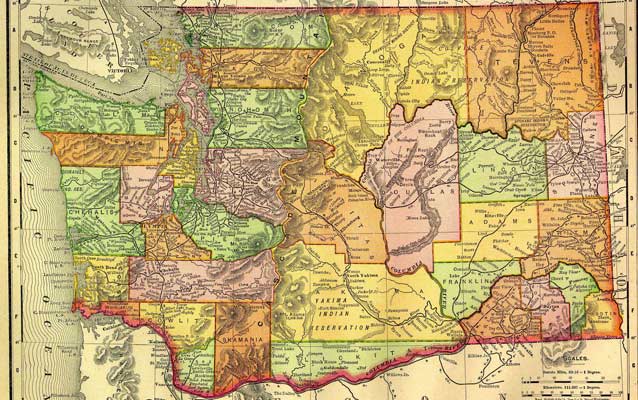Last updated: May 21, 2015
Lesson Plan
To Go or Not To Go (Lesson One in Elwha Unit)

- Grade Level:
- Middle School: Sixth Grade through Eighth Grade
- Subject:
- Social Studies
- Lesson Duration:
- 60 Minutes
- Common Core Standards:
- 6.RI.7, 6.RI.10, 6.W.1
- State Standards:
- State: Washington
Subject: Economics
Grade Level: 6-8th
State Standards: Washington State Social Studies Standards 2.2.1 - Thinking Skills:
- Remembering: Recalling or recognizing information ideas, and principles. Understanding: Understand the main idea of material heard, viewed, or read. Interpret or summarize the ideas in own words. Analyzing: Break down a concept or idea into parts and show the relationships among the parts. Creating: Bring together parts (elements, compounds) of knowledge to form a whole and build relationships for NEW situations. Evaluating: Make informed judgements about the value of ideas or materials. Use standards and criteria to support opinions and views.
Objective
In this lesson, students will answer the following essential question: What combination of factors, both natural and manmade, is necessary for healthy river restoration and how does this enhance the sustainability of natural and human communities?
Background
For background content knowledge, look through the material titled Summary of the Homestead Act of 1862. Also, look through additional resources.
Preparation
-
Decide whether to have students work individually, in partners, or in groups.
-
Identify students who may need support or an extra challenge.
-
Make one copy of the Summary of the Homestead Act of 1862 for each student.
-
Make one copy of the 1870 Catalogue for each student if working individually or group if working collaboratively.
-
Make one copy of the What to Take graphic organizer for each student if working individually or group if working collaboratively.
-
Make one copy of the To Go or Not To Go: Journal Prompt and Rubric for each student.
-
Decide on which option for the lesson hook or preview.
Materials
This is given to students when they are choosing what to bring when heading west. One copy should be made per student if working individually or per group if working collaboratively.
Download 1870 Catalogue of Goods
This where students will receive the directions for the activity to choose what to bring on the trip out west. This is also where students will record their decisions.
Download What to Take – Student Copy
This is a teacher master that gives an example of how students will record their decisions.
Download What to Take – Teacher Master
Student reading to be done to learn new content.
Download Summary of the Homestead Act of 1862
Lesson Hook/Preview
Option One: Play a few rounds of the Westward Trail Game. Ask students what challenges they saw the settlers taking.
Option Two: Ask students if their family has ever moved. If yes - ask why their family moved. If students say no – ask why their family decided not to move. Explain to students that in the 1800’s, families had to answer the same question for themselves but on an even bigger scale.
Procedure
-
Using classroom discussion and brainstorming introduce the concepts of westward expansion and decision-making.
-
Have each student read the summary of the Homestead Act of 1862. Make a list of what was needed to “prove up” a homestead.
-
File an application
-
Improve the land (12 x 14 dwelling and grow crops)
-
File for the deed
-
Conditions:
-
Could not bare arms against the United States
-
Had to live on the land for five years
-
Present the scenario found on the graphic organizer “What to Take”. Year: 1880, Method of travel: Wagon pulled by livestock, Status: Married Funds: $1,000.00 Home state: any east of the Mississippi River, Background information: Oxen are preferred over horses or mules because they are hardier for the harsh conditions. If the weather is dry, expect to travel 20 miles per day, if wet, 10 miles or less per day.
-
Have students use the 1870 Catalogue to complete the graphic organizer.
-
Have students create a journal or notebook for use during entire unit. Students will write a one to two paragraph essay in their journal on their decision of whether or not to attempt the trip to Washington State. Have them include what they think might happen on the trip, how far they could travel per day, and how long it might take them. They should also include their decision and their reasons for going or not going.
-
If the student decided not to go, the essay should include their reasons why they are not going and what they will do with their money. They should make up an occupation and where they live.
Vocabulary
Westward Expansion – The movement in America of settlers westward that began in the mid-1700’s and continued throughout the 19th century.
Assessment Materials
To Go or Not To Go: Journal Prompt and RubricHand out to students this journal prompt at the conclusion of the lesson to assess student understanding.
This will help assess student understanding of key concepts.
Journal Prompt and Rubric
Supports for Struggling Learners
-
Calculators can be provided to students who struggle with math.
-
Have students brainstorm their needs before looking at the 1870 Catalogue of Goods List
-
Assign jobs within heterogeneous grouping: Accountant to do the math, Leader to share the group’s decision, Supply Manager to pick up any necessary worksheets and turn in assignments, and Reader to read out loud the Summary of the Homestead Act.
Enrichment Activities
Take on a different historical perspective when writing the journal: freed African American, enslaved African American, or a woman. Information on these perspectives can be found at the sites listed under additional resources.
Additional Resources
African Americans and Westward Expansion
Individual Experiences with Westward Expansion
Related Lessons or Education Materials
Freeing the Elwha Unit: Life on the Homestead Lesson
Freeing the Elwha Unit: Neighbors Along the Elwha River Lesson
